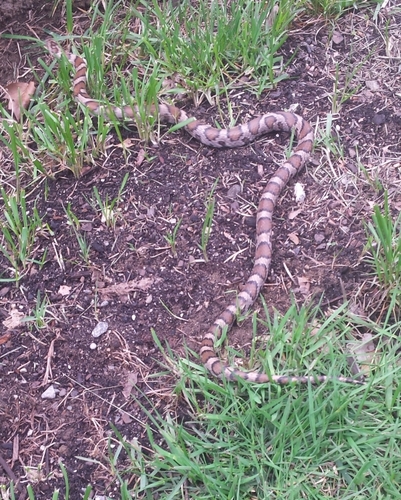TOWNSHEND — Rattlesnakes are an endangered species in Vermont, and the chance that a human being not specifically looking for one will see one is next to nil, according to Doug Blodgett, wildlife biologist with the Vermont Fish & Wildlife Department.
He said he gets frequent calls from people absolutely convinced there is a rattlesnake in their midst. The culprit is usually a milk snake or a water snake, which mimics the tail-shaking motion of a rattlesnake when threatened, Blodgett told attendees.
Neither of these snakes are venomous or harmful to humans.
“They don't eat us,” Blodgett said, adding, “They eat grubs, snails, and worms, little minnows, maybe a frog.”
As for rattlesnakes, he described them as doing “just about anything to avoid contact with us, but if you corner a snake and torment it, then it will defend itself,” Blodgett said.
So how do you know when you encounter a rattlesnake?
Look for a triangular head, and the actual sound of rattles. Not just any snake shaking its tail.
A rattlesnake's noisy end is made of the same thing our fingernails are made of: keratin. The loosely-connected rattles make the characteristic sound when the snake shakes them.
The warmer the air temperature, the higher the pitch the rattle makes.
As with trees, one can gauge with some accuracy the age of a rattlesnake by counting its rings - in this case, the number of rings making up the rattle.
“Each rattle represents a single shedding event,” Blodgett told the group, noting the shedding period happens every year from mid-June to July 1. During this time, the rattlesnake mostly stays in one place - possibly because it is blind. But, Blodgett said, the snake may eat a mouse if it gets close enough.
What do you do when you see a rattlesnake? Or hear one?
“The rattle is an alert that the snake is there,” Blodgett said. “It doesn't mean it'll bite.”
If you hear the sound, he said, back up slowly “with a soft foot.”
The “strike zone” is about half the snake's body length, Blodgett noted.
“Stay out of there,” he said.
If you see a rattlesnake, and want to look at it without disturbing it - which is the smart thing to do - he counseled to stand outside of the strike zone, “and don't scream and holler.”
Because rattlesnake venom contains neurotoxins, which attack the nervous system and will affect respiratory functioning, and hemotoxins, which cause hemorrhaging and tissue damage, getting bitten “will ruin your day,” Blodgett said.
However, Blodgett said that “we haven't had an accidental bite in 150 years.”
This is good news, especially to anyone living in Vermont.
According to Blodgett, Vermont has no supply of antivenin medication, and it takes 20 vials of the stuff to treat an afflicted human. When an attendee asked Blodgett if the fable about cutting a snake-bite victim and sucking the venom out is true, he replied, “that's a really bad idea.”
Blodgett emphasized that rattlesnakes are shy creatures that try to avoid humans.
“Most bites are on young men,” Blodgett said, adding, “usually alcohol is involved.”
